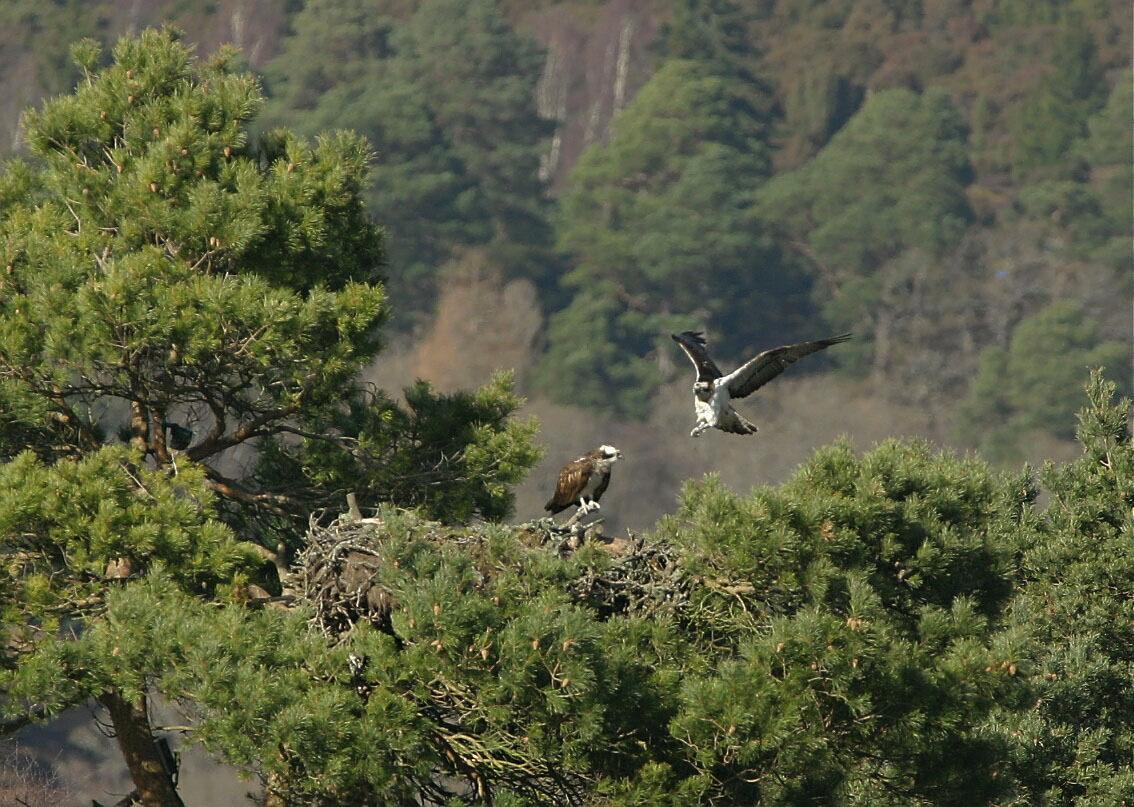The UK’S oldest breeding female osprey has confounded wildlife experts by returning to a Perthshire reserve for an incredible 20th consecutive year.
The remarkable bird is thought to have reached the grand old age of 25 — more than three times the average lifespan for her species.
Once again the hardy creature shrugged off any weariness brought about by her old age to undertake the gruelling 3000-mile trip to her favoured nesting spot at Loch of the Lowes — arriving on exactly the same day as she did last year.
Her story has captivated a worldwide audience of twitchers who have, in recent years, been glued to her antics via an internet link from the reserve.
Like any big star of the screen, she has inevitably become embroiled in no little controversy over the years and there was shock when, in 2008, she became involved in a brief liaison with her offspring.
The development was all the more shocking as it came after more than 14 years of monogamy.
Having started her journey in West Africa, her arrival in Perthshire should signal the beginning of yet another breeding season for one of Scotland’s most magnificent bird species.
Staff at Loch of the Lowes were delighted when she was spotted landing on her usual nesting site around 2pm on Tuesday.
Emma Rawling, a Scottish Wildlife Trust ranger covering Perthshire, has the job of protecting the osprey during the breeding season.Game old bird”We are truly amazed at the tenacity and endurance of this particular female osprey,” she said.
“Defying her age, she has made it back to us again and from initial sightings she looks like she is in remarkably good condition.
“She is now waiting for her mate to arrive to begin her 20th breeding season.
“So far, this one bird has laid 55 eggs, 46 of which have hatched into chicks which have successfully left the nest.
“She is a hardy old bird and I cannot wait to watch her progress over the next few months.”
It is hoped that the female osprey’s breeding partner, a male osprey identified with a green leg ring, will arrive within a week.
“Usually after mating, we would expect the female to lay between two to four eggs in early April, and six weeks later the eggs should hatch,” Emma said.
“However, as a very old bird, her fertility is now in doubt.
“We will be watching the nest with bated breath to see if our female can hatch any chicks again this year.”
Once again the public can watch all the action at www.swt.org.uk via a high definition “nest-cam.”
Once the first egg is laid, SWT staff, helped by nearly 70 volunteers, will man a round-the-clock watch.
